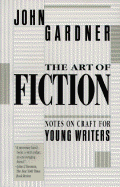The MGM
Wizard of Oz has gone through three stages defined by how we the public got to watch it.
First was the reception that the filmmakers envisioned: exhibition in 1939 as a “prestige picture” in movie palaces, mostly owned by Loew’s Theatres. The movie was then moved to smaller venues and eventually taken out of circulation. MGM re-released the film in the same way in 1949 as the Hollywood studio system was under legal and financial siege.
That cinematic run was successful, if not immediately profitable. Even with reduced admission prices for children,
The Wizard of Oz earned $3 million in its first release, enough to make it the second highest-grossing movie of 1939. It gained five nominations for Academy Awards, winning two. It established Judy Garland as a box-office star and enabled associate producer Arthur Freed to oversee many more movie musicals over the next two decades. Though most of the songs were novelty numbers, “Over the Rainbow” became a standard.
The next stage of the movie’s history started when MGM licensed the television rights to CBS in 1956. News reports about that deal marveled at how young Garland, Ray Bolger, and Bert Lahr had been when they made the picture—they were all major stars almost two decades later. In 1959 CBS took a further step and launched an annual showing, which the network touted as a major event for families to share.
The medium of television didn’t serve
The Wizard of Oz well artistically. With more than 90% of American households in 1966 still watching TV in black and white, the movie’s shift to color as Dorothy arrives in Oz was invisible to most of the audience. Likewise, the nostalgic sepia tone of the Kansas scenes was printed in standard grays, and a bit of the opening was trimmed to free more time for commercials.
Culturally, however, television did wonders for
The Wizard of Oz. Watching it once a year became almost required for American children, a common national experience. “Munchkin” entered the language, denoting small children and donut holes. Dorothy’s Ruby Slippers not only supplanted the book’s Silver Shoes in the public imagination but were enshrined in the Smithsonian’s National Museum of American History. In
Marvel’s The Avengers, the Flying Monkeys are the one pop-culture reference that WW2 veteran Steve Rogers shares with his Gen-X colleagues and the audience. To be sure, there were American children who grew up without seeing
The Wizard of Oz, or who didn’t like it enough to watch year after year, but most of them still knew its main points.
The third and current stage of the MGM movie’s life started with its release on VHS tape in 1980. It sped up as VCRs became standard household equipment and continues into today’s world of DVDs and streaming video. Now anyone ready to make an initial investment can watch
The Wizard of Oz anytime they want to. No more waiting years for MGM to re-release the fabled movie into theaters, no more waiting months for the annual television airing.
Artistically, today’s media serve the movie much better than the last stage. Though we’re not watching the picture on giant movie screens as in 1939, the film has been restored to its pristine appearance and full length. What’s more, we can study scenes and frames and edited footage, and multiple behind-the-scenes books tell us about what went into this piece of popular art.
On the other hand, the MGM
Wizard of Oz is no longer the cultural colossus it once was. The audience for popular entertainment has splintered, so families rarely gather around one screen to watch one channel. When one can watch the movie anytime, it no longer feels as urgent to watch it tonight. While the live-action recreations of the movie on stage and ice can provide families with a special shared experience as the movie itself once did, those productions are pale projections of the celluloid.
As a result, the fan base of the MGM movie appears to be shrinking and aging. The highest-profile works it inspired in the last three decades—Gregory Maguire’s novel
Wicked, the subsequent Broadway musical, and and the movie
Oz the Great and Terrible—were created for adult audiences, with sexual content and hardly any child characters. We once thought of
The Wizard of Oz as a near-universal part of growing up in America. Now we see that only a couple of cohorts of Americans shared that experience.
Fortunately, the same abundance of entertainment media that swamps the annual airing of
The Wizard of Oz offers many other ways to enjoy the Oz mythos. The original books, new books and comics inspired by them, virtually all the Oz movies and TV cartoons ever made—they’re all available for children to try. There are more doorways into Oz fandom now, not one big door that nearly all American children were funneled through to see if they liked it. But will more variety make up for smaller numbers?
[This essay was written at the behest of Michael Booth, to be published on his Facebook page in celebration of the 80th anniversary of the release of
The Wizard of Oz on 25 August.
The
picture above is PhotoShop art by LunaC, hosted on FreakingNews.com.
The challenge was to slip a cathode ray TV into an old painting. LunaC chose Joseph Wright of Derby’s depictions of science in the eighteenth century.]











